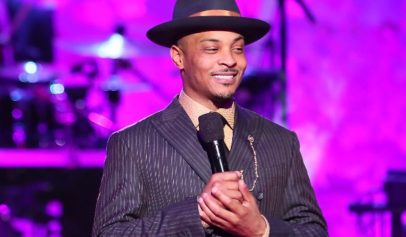More than 40 years after a state trooper slammed John Lewis‘ head with a club as he protested in Selma, Ala., the U.S. representative offers advice for today’s activists.
Lewis, D-Ga., a former Freedom Rider and the sole survivor of the major organizers of the March on Washington, is traveling across the country to promote his new book, Across That Bridge: Life Lessons and a Vision for Change. In an interview about the book, he tells the Occupy movement and others protesting conditions in today’s world to be more focused.
He said he wrote his book to advise people how to live. The 180-page book includes essays such as “Faith,” “Patience” and “Peace.”
“I hope it will inspire a modern-day movement,” Lewis, 72, said during an interview in New York.
Lewis has represented metropolitan Atlanta in Congress for 25 years but also is known for his work as a Freedom Rider protesting segregation at interstate bus terminals and heading the Student Nonviolent Coordinating Committee.
During the interview, Lewis recalled his days as a student leader in the civil rights movement, when he and other protesters would put on crisply ironed suits for protests. Lewis said that on March 7, 1965, the “Bloody Sunday” march for voting rights across the Edmund Pettus Bridge in Selma, Ala., he brought a paper bag with an apple, orange, toothbrush, toothpaste and a book by a monk.
He and the others mentally prepared themselves for jail or even death, he said, and they focused their thoughts on Martin Luther King Jr.’s teaching of non-violent resistance.
“It’s really what I believe in,” Lewis said. “When I was a student, I studied philosophy and religion. I talked about being patient. Some people say I was too hopeful, too optimistic, but you have to be optimistic just in keeping with the philosophy of non-violence. If you’re not hopeful and optimistic, then you just give up. You have to take the long hard look and just believe that if you’re consistent, you will succeed.”
Lewis suggested that focus isn’t present with today’s activists, such as members of the Occupy movement, who should pick a goal and stick with it. That’s what he and his cohorts did, he said.
“We were like trees,” he said. “We were prepared to give it everything that we had. I say to people today, ‘You must be prepared if you believe in something. If you believe in something, you have to go for it. As individuals, we may not live to see the end.’ ”
Members of the Occupy movement said John Lewis and others from the civil rights movement have been examples for them. The group in New York has worked with Joan Pleune, a former Freedom Rider .
“Dr. King, he talked about the triad of racism and injustice and capitalism,” said Dana Balicki, organizer with the Occupy Wall Street public relations team. “We feel like we’re … continuing to move this forward.”
The group has called unfocused before, Balicki said, but leaders disagree.
“I always respond that the work we do as Occupy Wall Street and the Occupy movement is now a global movement for economic justice inspired by the Arab Spring,” she said, referring to the wave of demonstrations that spread through the Arab countries starting in December 2010. “We are creating a container for the conversation to change, but also a way of having the conversation.”
The group has specific goals and achievements, Balicki said, including mobilizing students to fight the crippling effects of student debt and helping to save people’s homes.
Lewis said he was at the Los Angeles hotel when Sen. Robert F. Kennedy, D-N.Y., was fatally shot in June 1968. Lewis was also a disciple of Martin Luther King Jr., shot and killed in April 1968. The minister often referred to Lewis as “the boy from Troy,” a reference to Lewis’ hometown in Alabama.
“I always felt that I had an obligation because of what they left off,” Lewis said of Kennedy and King. Of the book, he said, “I want people to talk about it.”
Source: USA Today


